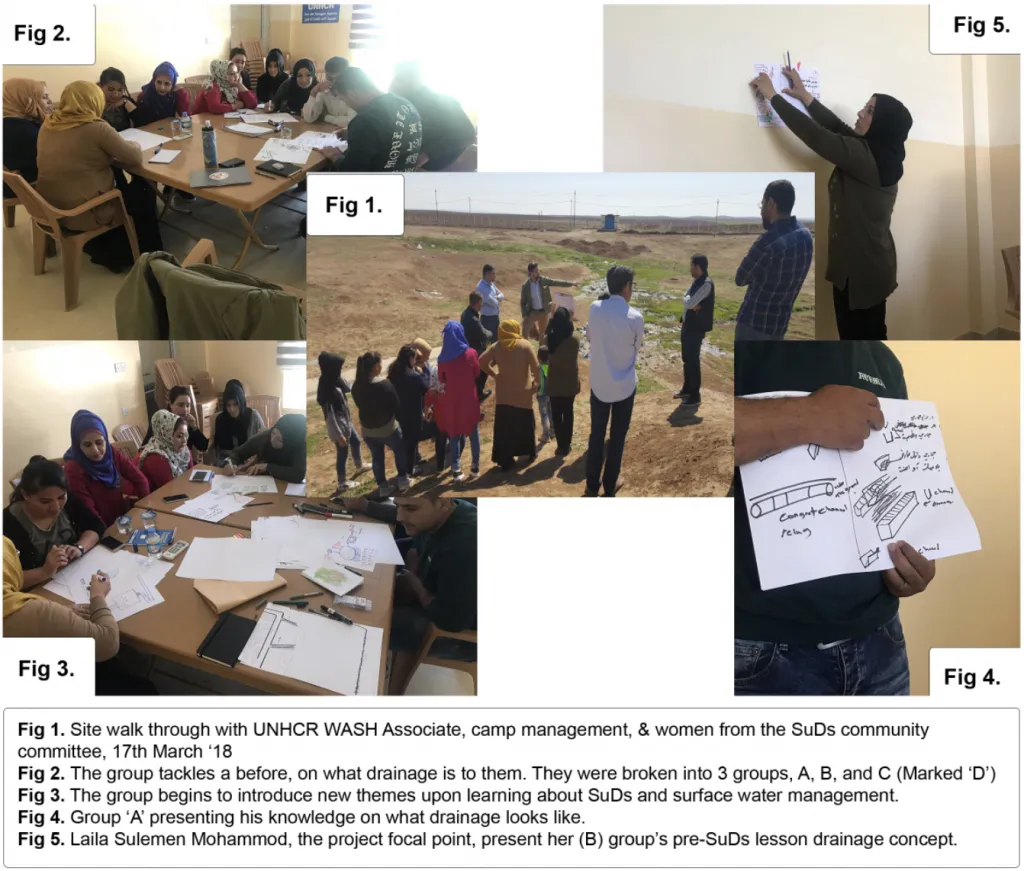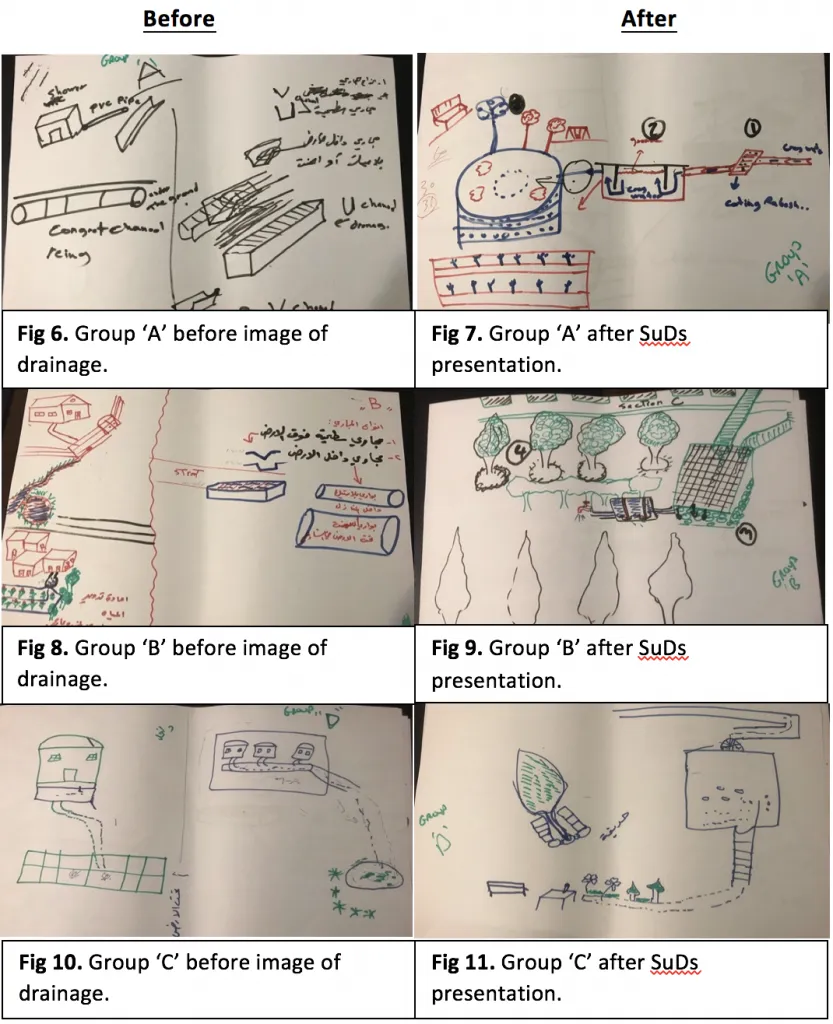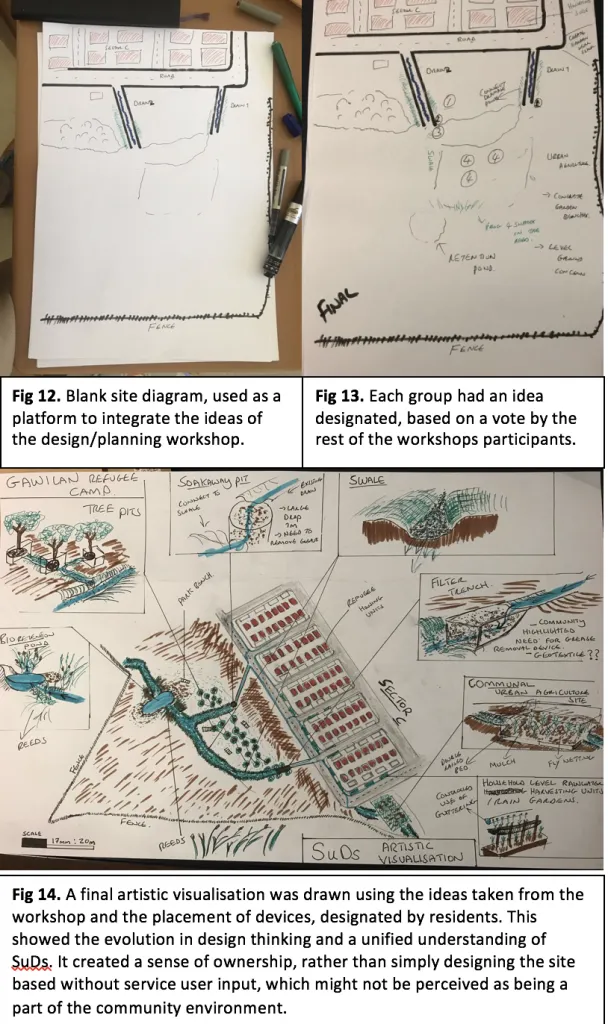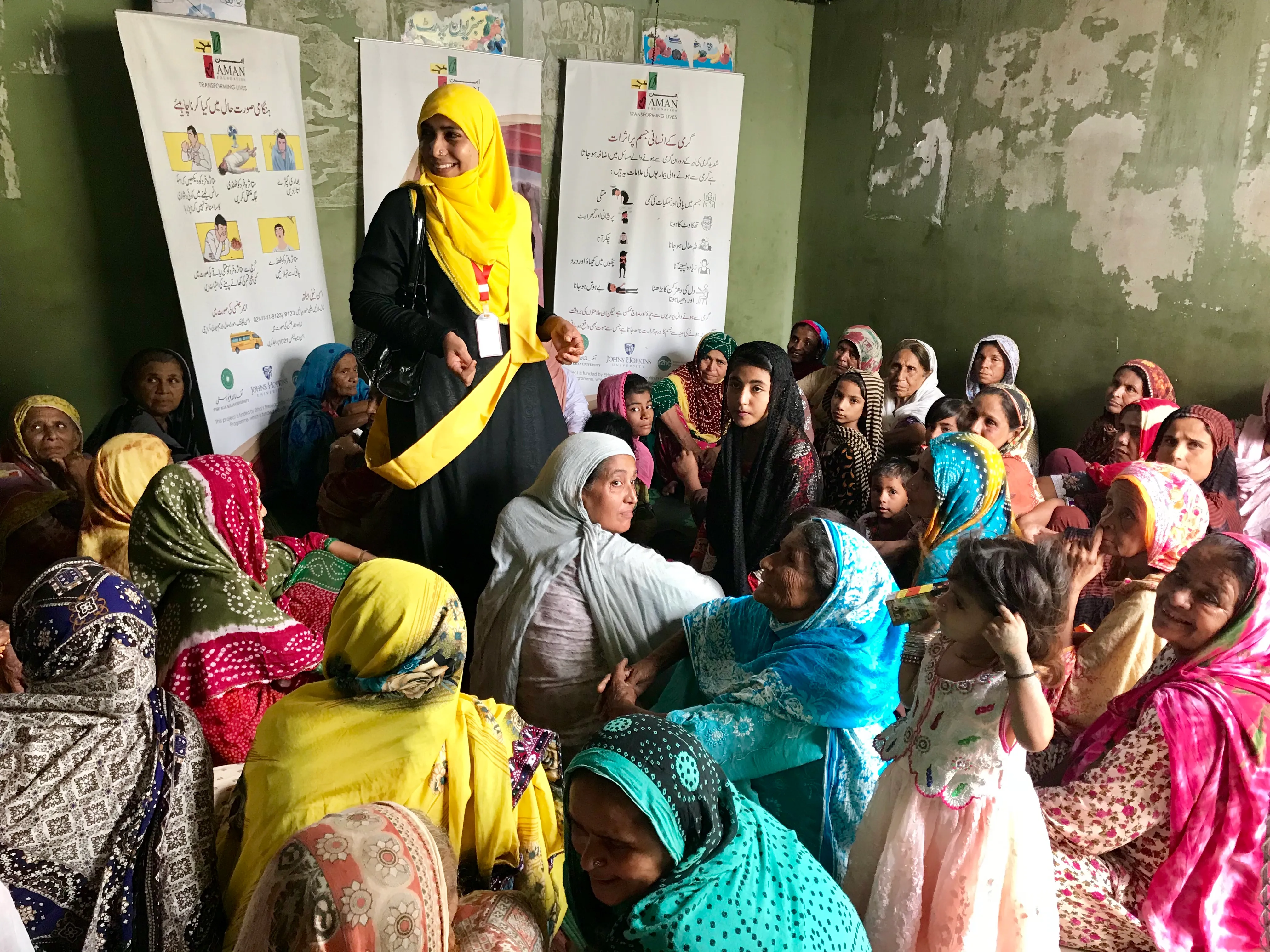Participatory SuDs Design in Action at Gawilan Camp

A large part in the success of any activity is collective action. When people cooperate great change happens, and it is upon this premise the project takes its modus operandi. That being said, the notion of adaptive co-management is not a familiar term to everyone.
What is adaptive co-management?
Adaptive co-management in effect encompasses what participation is all about, and that is involving all stakeholders at the macro to the micro. Whether we’re listening to UNHCR’s perspective and challenges to those of camp residents each has a valid point to make.
Along the course of our project cycle we’d like to believe each challenge is overcome and if possible, whether or not this is the case, the lessons learned are fed back into the project along the way.
Intrinsically this type of management practice is supported by action research, which is research carried out in the course of activities, providing the necessary flexibility to overcome obstacles more easily, especially in what is considered a challenging environment.
Kurdistan - A Challenging Environment
Before going any further, it is important to touch upon ‘challenging environment.’ In a region (for some a country) that is self-governed, but not its own sovereign state, Kurdistan has of late become a difficult place to enter and exit.
On 25 September the self-governed, semi-autonomous region underwent a referendum in the attempt to secede from wider Iraq. After a 92% vote in favour of the process of secession, the region was curtailed into subservience by the central Government of Iraq.
Besides already operating in a region, marred by oil price turbulences, fighting ISIS, hosting over 200,000 Syrian refugees, and militarised checkpoints which stall movement at every next juncture, the Iraqi government closed the international airspace for flights entering into the Kurdistan Region of Iraq.
This resulted in permissions of only 30 days on monthly visas, whilst through letters from the ministry of interior, the UNOCHA attempted to allow humanitarian actors three months in which to be able to remain in the country from November 2017. Very little clarity remained thereafter, as either you were to travel from a land route across the Turkish border, or find yourself deported if your paper work was not keeping up with the state of affairs in Baghdad. Ultimately, a challenging environment is not only made difficult by ongoing conflicts, but internal politics, one that leads to delays and setbacks.
Our Progress So Far
[caption id=attachment_10715" align="aligncenter" width="600"]

Image 1[/caption]
Fortunately, back on equal footing, Saturday 17 March saw the opportunity to engage with three levels of stakeholders:
- UNHCR and camp managers from Board of Relief and Humanities Affairs (BRHA) (macro),
- WASH cluster partners (termed 'the intermediaries')
- The camp residents (micro).
During a site presentation to the Gawilan refugee camp manager, Mr Ismail Ali Ismail and UNHCR’s WASH Associate, Mr Vaheel Mushin Mohamad (Fig.1), I was able to demonstrate the need for introducing measures to tackle water conveyed beyond residential areas, and walk through systems to be introduced to improve the site. Their main concern was the interaction drainage has with sanitation and hygiene as children were seen playing by the site. In explaining that water is infiltrated into the ground, through the use of swales, filtration trenches and other components, he was keen to attend our upcoming workshops.
We soon moved to a participatory design/planning workshop with the SuDs (sustainable drainage) management committee, from Sector C of the camp, which is the sector nearest to our intervention zone. The group was composed of four men and six women. The aim of the workshop was principally to get our creative juices going and get ideas on paper.
Interestingly, a common theme emerged: 'making it like home', taking memories from Syria.
This was poignant in that it meant for the residents, as well as the design, their interest in the project reached beyond the steel fence perimeter of the camp, and began to grapple with images of what a “home/SuDs” hybridisation might look like. A moving intersection for landscape design in the humanitarian sector. Participants were asked to draw their version of drainage. After a brief learning session on SuDs and surface water management, they were then able to introduce new themes into approaching drainage.
You can see more from the workshop in this video.
The process allowed for change to occur in the worldview of the individuals whilst capturing this through discussion and imagery the change was a tangible one. Participants presented each of their ‘before’ designs and after the lesson on SuDs, interesting patterns began to emerge:
[caption id="attachment_10714" align="aligncenter" width="600"]

Image 2[/caption]
The workshop participants were then provided with a blank site diagram (Figs. 12 and 13), in the layout of the site on which to layer their ideas over the top. Each idea they created was numbered and then allocated a point on the blank site diagram.
[caption id="attachment_10713" align="aligncenter" width="608"]

Image 3[/caption]
In the next blog we talk about soil profiling and topographical surveying at the site.
Stay updated
Sign up for our newsletter to receive regular updates on resources, news, and insights like this. Don’t miss out on important information that can help you stay informed and engaged.
Related articles



Explore Elrha
Learn more about our mission, the organisations we support, and the resources we provide to drive research and innovation in humanitarian response.